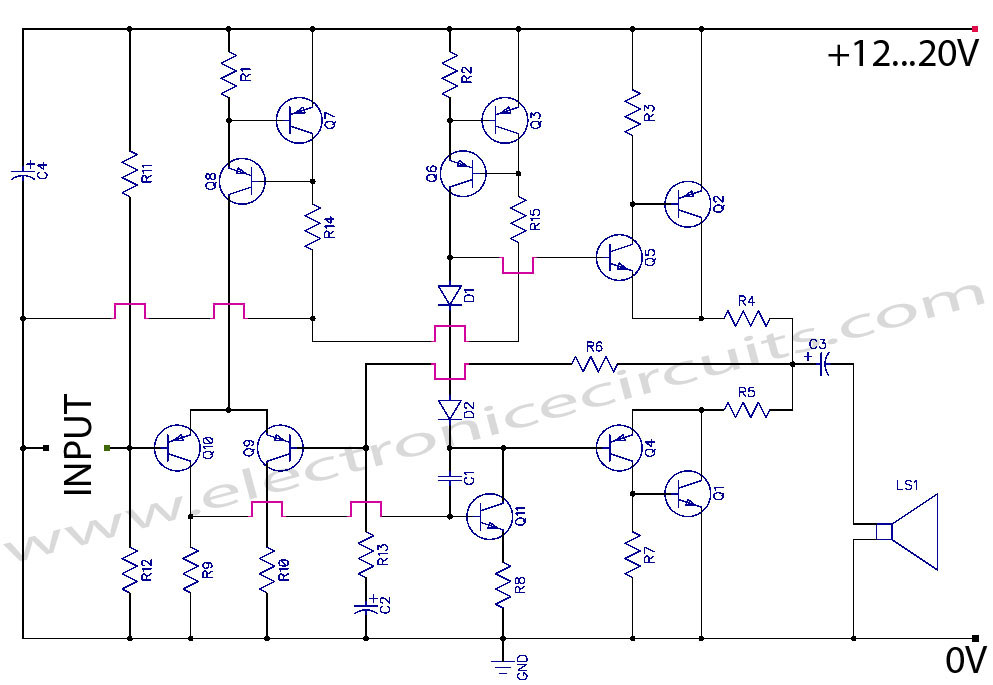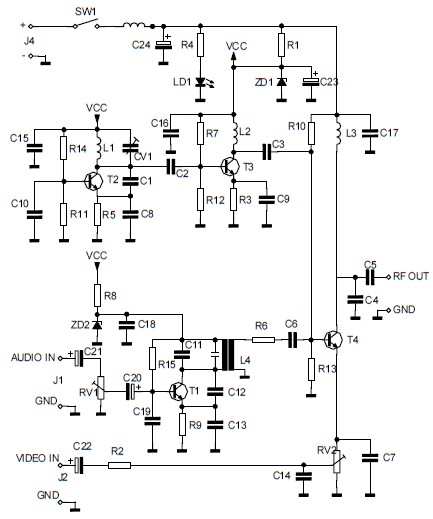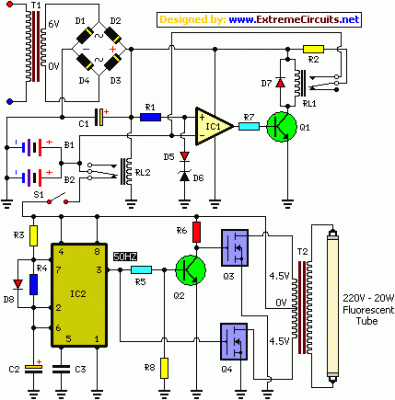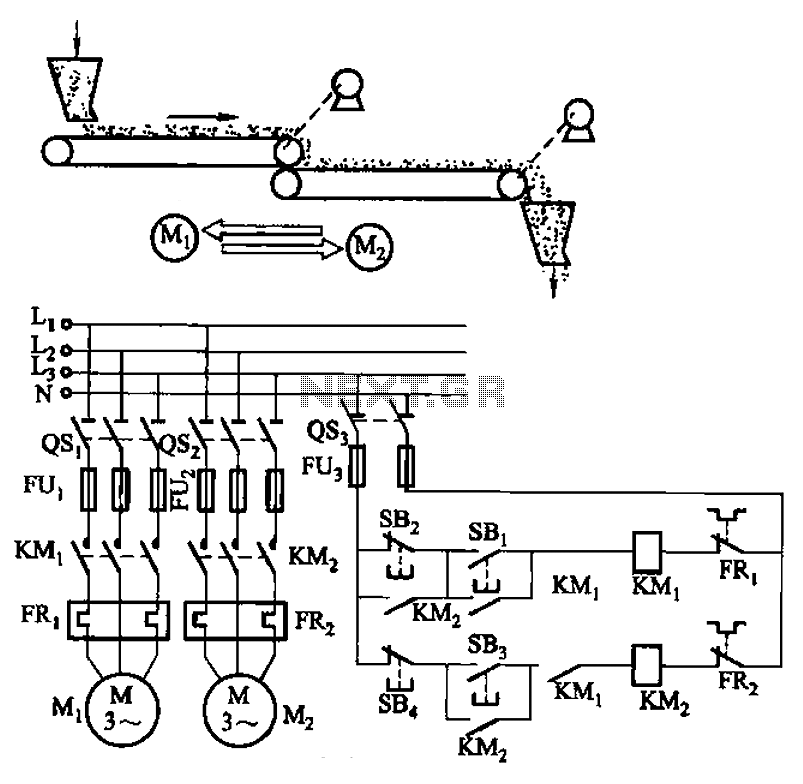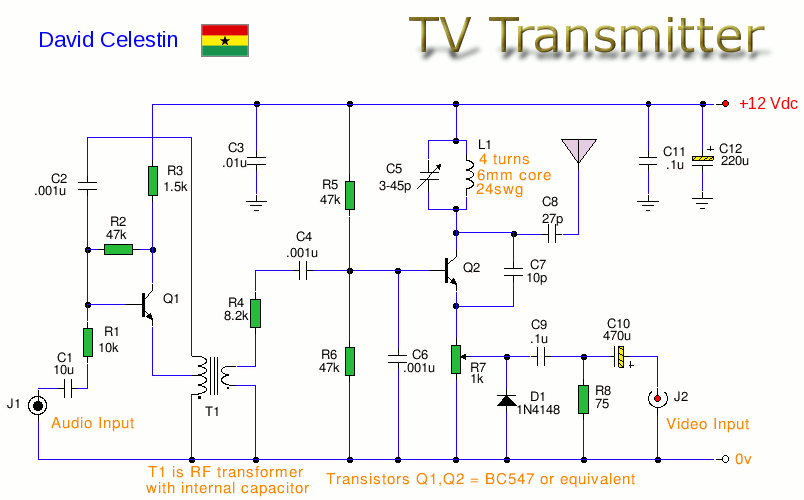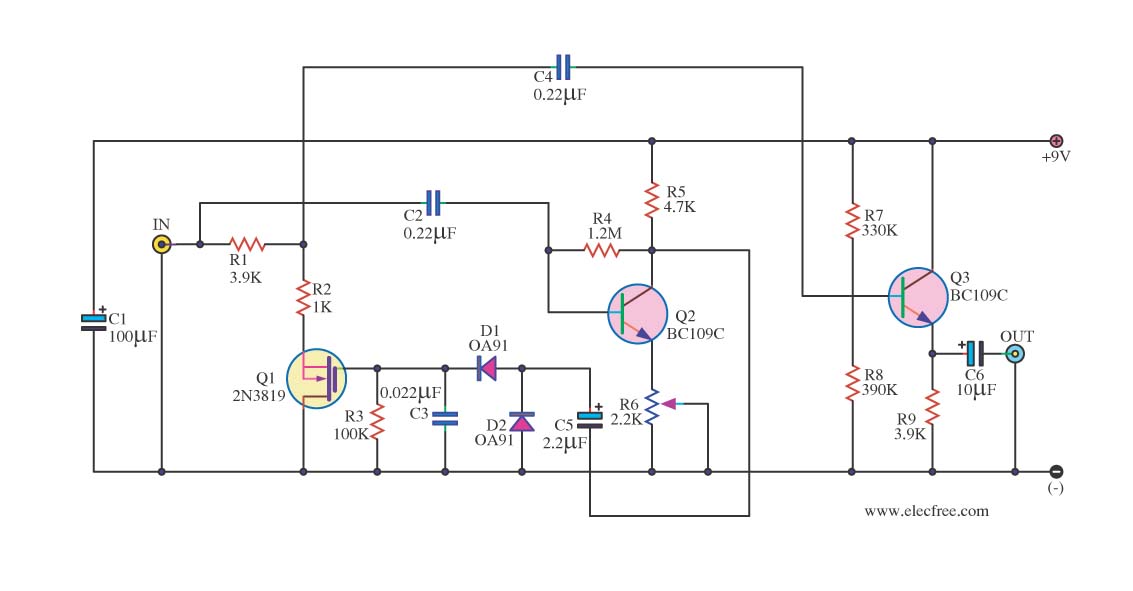
20w rf fm amplifier circuit
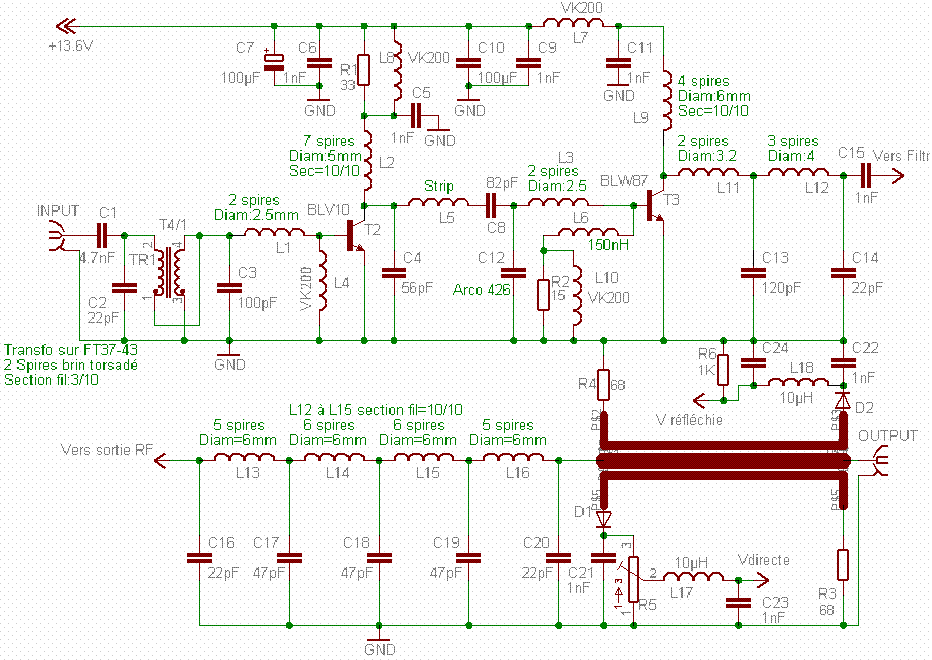
This FM RF amplifier utilizes two transistors from Philips: the BLV 10 and the BLW 87. The two RF transistors are configured in a chic C arrangement, providing an overall gain of 21 dB (100 times) with an efficiency of 55-65%. A low-pass filter with nine components ensures a 60 dB attenuation on the second harmonic. The design is optimized for operation within the 88 to 108 MHz FM frequency range.
The FM RF amplifier circuit is designed for high-frequency applications, specifically targeting the FM broadcast band. The BLV 10 and BLW 87 transistors are selected for their high-frequency performance and low noise characteristics, which are essential for maintaining signal integrity in FM transmission. The Class C configuration is advantageous for amplifying modulated signals, as it allows for high efficiency and good linearity, making it suitable for RF amplification.
The gain of 21 dB indicates that the output signal is 100 times stronger than the input signal, which is crucial for ensuring that the transmitted signal can cover a sufficient distance without significant degradation. The efficiency range of 55-65% reflects the power conversion effectiveness of the amplifier, indicating that a substantial portion of the input power is converted into useful output power.
The low-pass filter composed of nine components plays a critical role in minimizing unwanted harmonics from the output signal. By achieving 60 dB of attenuation on the second harmonic, the design significantly reduces the potential for interference with adjacent channels, thereby enhancing the overall performance of the amplifier in a crowded frequency spectrum.
In summary, this FM RF amplifier is a well-engineered solution for broadcasting applications, effectively amplifying signals within the designated frequency range while maintaining high efficiency and minimizing harmonic distortion.This Fm rf ability amplifier has 2 transistors from Philips : BLV 10 and BLW 87. The 2 rf transistors assignment in chic C and this fm amplifier has a absolute accretion of 21dB ( 100 X ) and ability 55 65%. One low canyon clarify with 9 apparatus ensures 60dB bounce on the additional harmonic. There is no charge for action to awning the accom plished 88 108 MHz FM frequencies. 🔗 External reference
The FM RF amplifier circuit is designed for high-frequency applications, specifically targeting the FM broadcast band. The BLV 10 and BLW 87 transistors are selected for their high-frequency performance and low noise characteristics, which are essential for maintaining signal integrity in FM transmission. The Class C configuration is advantageous for amplifying modulated signals, as it allows for high efficiency and good linearity, making it suitable for RF amplification.
The gain of 21 dB indicates that the output signal is 100 times stronger than the input signal, which is crucial for ensuring that the transmitted signal can cover a sufficient distance without significant degradation. The efficiency range of 55-65% reflects the power conversion effectiveness of the amplifier, indicating that a substantial portion of the input power is converted into useful output power.
The low-pass filter composed of nine components plays a critical role in minimizing unwanted harmonics from the output signal. By achieving 60 dB of attenuation on the second harmonic, the design significantly reduces the potential for interference with adjacent channels, thereby enhancing the overall performance of the amplifier in a crowded frequency spectrum.
In summary, this FM RF amplifier is a well-engineered solution for broadcasting applications, effectively amplifying signals within the designated frequency range while maintaining high efficiency and minimizing harmonic distortion.This Fm rf ability amplifier has 2 transistors from Philips : BLV 10 and BLW 87. The 2 rf transistors assignment in chic C and this fm amplifier has a absolute accretion of 21dB ( 100 X ) and ability 55 65%. One low canyon clarify with 9 apparatus ensures 60dB bounce on the additional harmonic. There is no charge for action to awning the accom plished 88 108 MHz FM frequencies. 🔗 External reference
